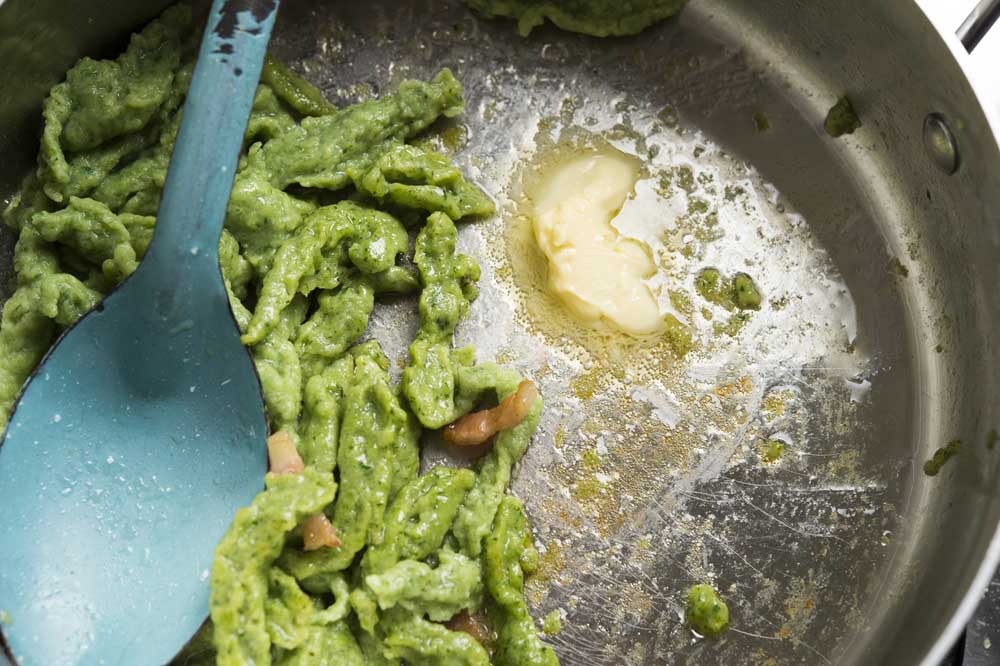Serve spaetzle for supper or as a side
Published 12:00 am Tuesday, October 27, 2015

- Evan Sung / The New York TimesSpinach Spaetzle with Bacon and Sage simmers in a pan. It’s actually fairly easy to make spaetzle at home, though it takes a bit of practice.
As a fledgling restaurant cook, I learned how to make spaetzle, the delicious little German dumplings, from an accomplished Austrian chef. He could practically make a batch of spaetzle with his eyes closed, standing next to the stove and rapidly cutting fine strips of batter from a board directly into a pot of simmering water, in the Old World manner.
Spaetzle, sometimes called batter noodles, are actually fairly easy to make at home, though it takes a bit of practice. Once you get the hang of the process, they are wonderful to have in your repertoire.
Trending
First, combine the few ingredients for the thick batter (flour, water and egg) as if making pasta, but keep the mixture much wetter, with a more porridge-like consistency. After letting it rest, use the edge of a soup spoon to flick little half-moons of batter into the pot. This is the method I find easiest, producing medium-size spaetzle with a pleasant, chewy quality. (But for that matter, the old-fashioned knife method is fun when you master it.)
Many home cooks use a special spaetzle-making tool, available at cookware shops or online, that forces squiggles of batter into the pot. With the spaetzle tool, though, the batter must be looser still, almost pourable, and you get smaller, delicate spaetzle. Pushing the batter through the holes of a colander gives similar results.
Spaetzle are routinely made hours (or days) in advance and reheated, which makes them ideal for a quick supper or side dish. Sometimes they are tossed with softened onions and cheese and baked, for a bubbling casserole. Easier, and perhaps even tastier, is to brown them lightly in butter with a little ham or bacon. Cooking them and eating them straightaway is, of course, a fine option.
I recently made green spaetzle, incorporating spinach purée, for a party with chef Joel Hough of the Il Buco restaurants in New York. Neither of us had made them in quite awhile, but happily we had not lost the knack. Evidently, it’s a bit like riding a bicycle; one doesn’t forget how. In no time, we were simmering little green slivers of batter in salted water, then sautéing them with butter and sage.
They tasted just as we remembered them: tender, buttery and satisfying, showered with grated Parmesan and freshly ground black pepper.







